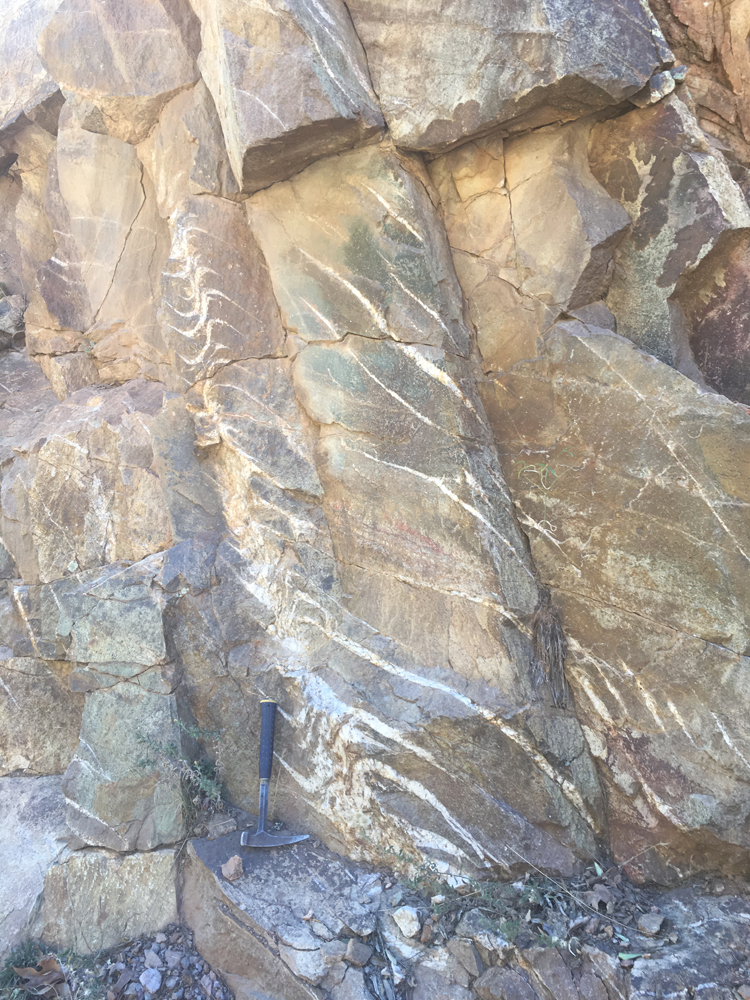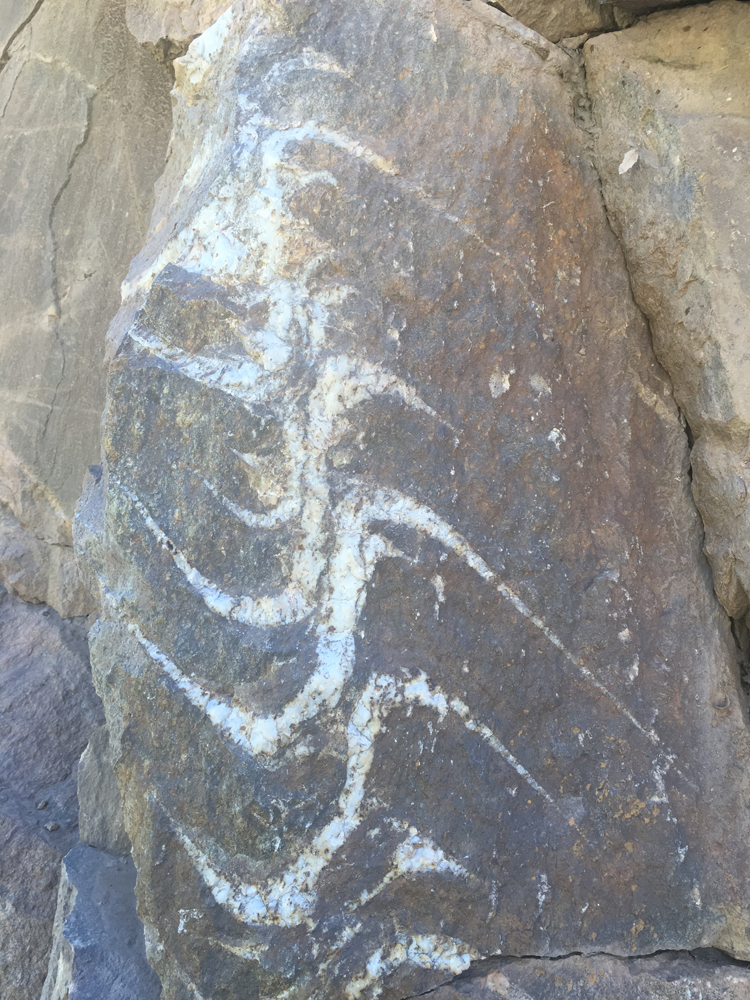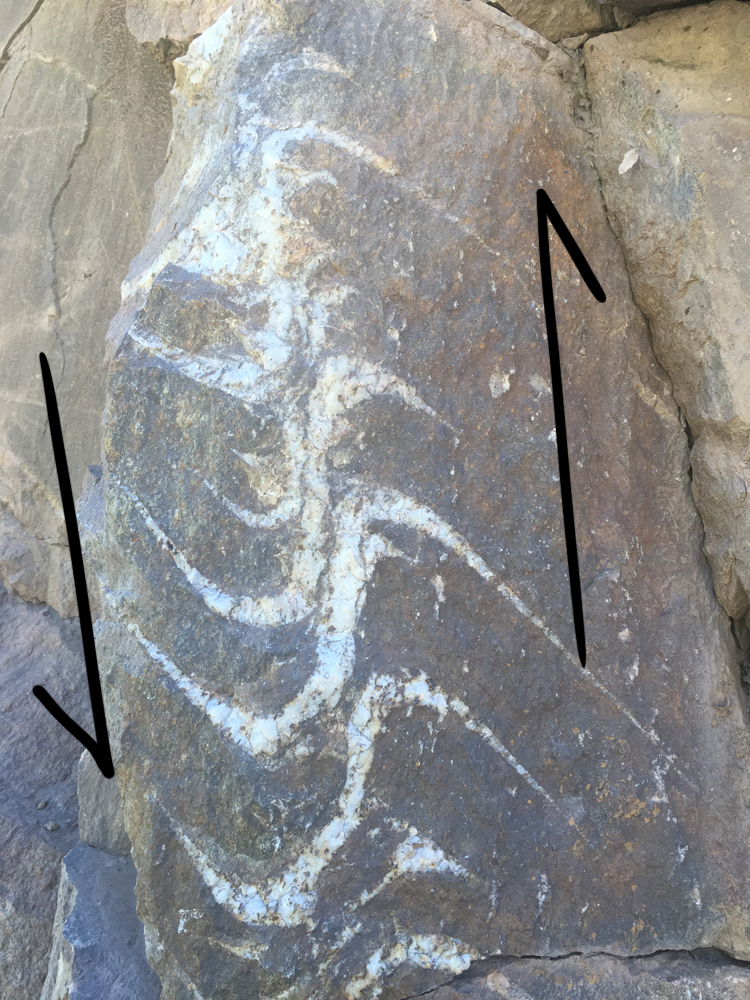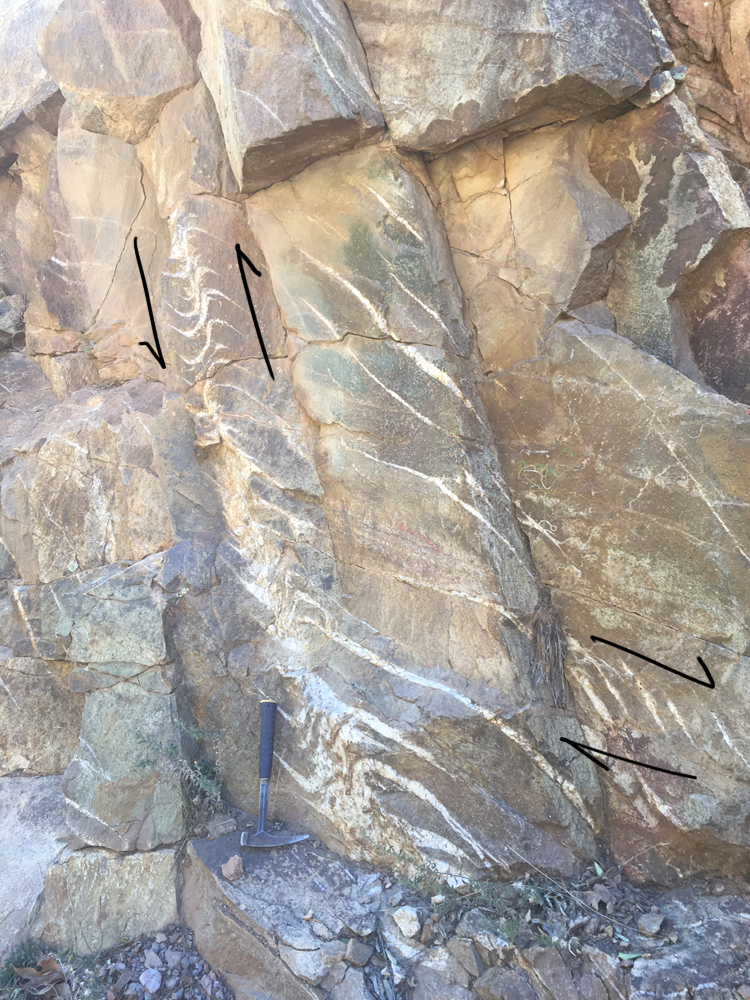Reader John Christian shared these folds with me via email last week. They are
quartz veins in slightly metamorphosed Precambrian igneous rocks found near Sunflower, AZ in the Mazatzal Mountains.


The second photo is a close-up shot of the curviest, cleanest batch of folds from the first shot.
These are beautiful examples of folds in similarly oriented quartz veins; we call them “en echelon” for the way you have a bunch of them “marching in formation” w/ the same orientation, and we describe the style of vein as “tension gashes” for their distinctive shapes, with wide middles and tips that rapidly narrow down to nothing. Here’s a similar example from this blog, though not as lovely as the one John sent:
https://mountainbeltway.all-geo.org/2010/08/24/tipping-your-tension-gash/
Shearing impacted these rocks in a style of deformation that was simultaneously brittle and ductile. The host rock developed “stretch marks” in the form of these tension gashes, which are after all fractures in the rock, but the rock on either side of the fracture is behaving relatively flexibly, as evidenced by the way these features go from non-existent to a few centimeters wide back down to non-existent again over the distance of only a few 10s of centimeters. The rock “flexed” to allow such a fracture to develop. The fracture was sealed with hydrothermal quartz (bright white due to lots of itty-bitty inclusions of trapped water), making a vein. But deformation didn’t stop then: the two sides of this zone of shearing kept moving, and the quartz veins had to deform to accommodate this differential motion: depending on the portion of the vein you look at, they got stretched, or squashed, or rotated. The overall effect was to take an initial thin “/” shape and bend into into an exaggerated “S” shape.
Let’s add some arrows:


These are really cool structures; Thanks for sharing them with us, John!

Another possible explanation, commonly used for tension gashes not as recurved as these, is that the principle stress direction rotated relative to the rock through time, ending in a direction parallel to the tips. This doesn’t require internal deformation of the rock.
There’s tension beacuse there’s gotta be GOLD there! A bunch of it. Where there’s Quartz there’s Gold somewhere in the area.. Orrrr am i jus full of dust.. ? Lol gold dust